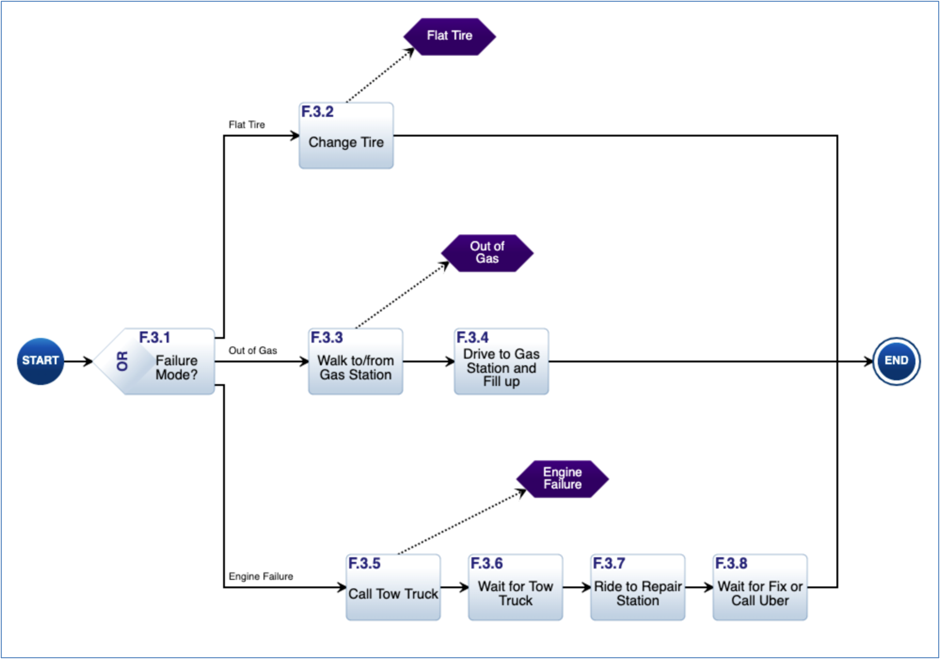5 min read
Non-Functional vs. Functional Requirements: When to Use Each Type
Elizabeth Steiner
:
7/15/24 3:15 PM

When developing a system, understanding and writing effective requirements is crucial for ensuring the final product meets the intended needs. Requirements management involves categorizing requirements into two types: functional and non-functional. This blog explores the differences between these two types, examples, how to model them, and how to test them.
Non-Functional Requirements
What Are Non-Functional Requirements?
Non-functional requirements (NFRs) define a system's quality attributes, performance standards, and operational constraints. They describe how a system should behave rather than what it should do. NFRs ensure the system's usability, reliability, performance, and security, contributing to the overall user experience and system maintainability.
Types of Non-Functional Requirements
Performance
Performance specifies the system's response time, throughput, input/output, and resource usage.
Security
Security defines the measures the system must adhere to, including data protection, authentication, and authorization protocols.
Usability
Usability addresses the user interface design, accessibility, and ease of use.
Reliability
Reliability is the system's ability to function correctly over time, including availability, fault, risk, and disaster tolerance.
Scalability
Scalability is the range a system can handle increased loads or expandability for future growth and product development.
Compliance
Compliance specifies adherence to regulatory, legal, and industry standards.
Non-Functional Requirements Examples:
- Performance: The system must process transactions within two seconds.
- Security: The system must encrypt all sensitive data using AES-256 encryption.
- Usability: The system should have a user-friendly interface that adheres to WCAG 2.1 accessibility standards.
Modeling Non-Functional
Non-functional requirements (NFRs) are typically less straightforward to represent visually compared to functional requirements, but certain diagrams and models can still effectively capture and communicate these requirements. These diagrams help stakeholders understand the system's performance, usability, security, and other quality attributes. Here are some of the commonly used diagrams for non-functional requirements:
Fault Tree Analysis
Takes a top-down approach to identifying potential causes of system failures. This diagram helps in understanding the impacts of component failures on overall system reliability.

Reliability Block Diagrams (RBD)
RBDs illustrate the reliability relationships between different parts of a system. RBDs are used to model the availability and reliability of a system by showing the interconnections of various components.
SysML Requirements Diagram
The Requirements Diagram is a versatile tool used to capture and manage requirements in a structured format. However, it is not specific to either functional or non-functional requirements; it can represent both types.

LML Asset Diagram
The Asset Diagram is used to represent and model the physical and logical assets of a system, including their relationships, attributes, and interactions. It provides a clear visualization of the components and their connections, which is essential for understanding system architecture, identifying dependencies, and managing system elements effectively.

You can model the safety process or security controls as part of the Action diagram model. Also, Resources, Conduits, and I/Os are non-functional items that often are traced to non-functional requirements. For example, a non-functional requirement would be "the gas tank shall not exceed 20 gallons." You would model this as a resource so as an action consumes the Fuel Resource, you could check to see when it gets low and prompt the driver to fill-up the tank or if it was an automated system, you would determine the location of the nearest gas station and redirect it there.
Functional Requirements
What Are Functional Requirements?
Functional requirements (FRs) specify the behavior and functionality of the system. They describe the actions the system must perform in response to specific inputs or under certain conditions. FRs focus on what the system should do to meet the user's needs and achieve its objectives.
Key Characteristics of Functional Requirements
Behavioral Descriptions
These define the interactions between the system and its users or other systems.
Business Rules
These specify the operational rules and constraints that govern system processes.
Data Handling
This section describes the data inputs, outputs, storage, and processing requirements.
User Interaction
This details the features and functions available to users, including user interface design and workflows.
Functional Requirements Examples:
- User Login: The system must allow users to log in using a username and password.
- Data Entry: The system should enable users to enter, edit, and delete customer records.
- Report Generation: The system must generate sales reports based on specified criteria.
Modeling Functional Requirements
Modeling functional requirements involves creating representations of the system's behavior and interactions. This can be achieved through various techniques and tools that help visualize and clarify the requirements.
Functional Modeling
Use Case Diagram
Use Case Diagrams are behavior diagrams that show how an actor interacts with a system under different use cases and their relationships.
One of the most common ways to model functional requirements is through a Use Case Diagram. These diagrams represent interactions between users and the system, highlighting the functional requirements. The Use Case Diagram is highly visual but can be challenging to view complex processes.

Activity Diagram
Activity Diagrams are behavior diagrams showing flow in terms of actions and inputs & outputs.
Sequence Diagram
Sequence Diagrams are used to represent the sequential message flow (Input/Output entities) between Lifelines (Asset entities).
You could also use SysML's classic activity diagram or sequence diagram to model functionality. The activity diagram shows the flow of activities and decision points within a process.
The sequence diagram illustrates the sequence of messages exchanged between system components to achieve a specific function. LML's functional diagram offers a different solution.

Action Diagrams
Action Diagrams, traditionally known as functional flow diagrams, are a method of displaying Action entities, their interactions via Input/Output and Resource entities, and logical flow.
The action diagram brings together the benefits of the activity diagram and the sequence diagram. Allowing users to easily view the flow of steps and decisions while also viewing the exchange of inputs and outputs between the system components. It also allows easy visualization of resource usage.

State Machine Diagrams
State Machine Diagrams depict the states of the system and the transitions triggered by events or conditions.

Modeling Languages for Non-Functional and Functional Requirements
UML
The Unified Modeling Language (UML) is a standardized modeling language that creates diagrams representing functional requirements.
SysML
The Systems Modeling Language (SysML) is an extension of UML tailored for systems engineering applications. It provides tools for modeling complex systems.
LML
The Lifecycle Modeling Language (LML) is an ontological modeling language tailored to systems engineers and project managers.
Testing Non-Functional and Functional Requirements
Testing ensures that both functional and non-functional requirements are met, validating that the system performs as expected and meets quality standards. Non-functional and functional requirements require different testing methods because they address distinct aspects of a system's performance and behavior.
Testing Functional Requirements
Unit Testing
Verifies the most minor parts of the application, such as functions or methods, for correct behavior.
Integration Testing
Checks the interactions between different modules or components of the system.
System Testing
Assesses the system as a whole to ensure it meets the specified functional requirements.
Acceptance Testing
Validates the system against user requirements and business objectives.
Testing Non-Functional Requirements
Performance Testing
Performance testing evaluates the system's responsiveness and stability under load conditions.
Security Testing
Security testing assesses the system's vulnerability to attacks and ensures data protection.
Usability Testing
Usability testing examines the user interface and overall user experience for ease of use and accessibility.
Reliability Testing
Lastly, reliability testing measures the system's ability to operate correctly over time, including fault tolerance and recovery processes.
It is crucial to test functional and non-functional requirements differently due to their distinct focus areas, measurement criteria, and the unique nature of the attributes they address. Functional testing ensures that the system performs the required tasks correctly, while non-functional testing ensures that the system meets performance, security, usability, and other quality standards. Together, these testing approaches provide a comprehensive evaluation of the system, ensuring it meets both its functional goals and quality expectations.
Understanding the distinction between functional and non-functional requirements is essential for effective system development. Functional requirements define the specific behaviors and functions of the system, while non-functional requirements outline the quality attributes and operational constraints.
Both types of requirements are critical for ensuring a system meets its intended purpose and provides a satisfactory user experience. By modeling and thoroughly testing both types of requirements, developers can create robust, reliable, and user-friendly systems.
Watch the recording of our webinar, "Functional Modeling 101!"
Talk to an Expert
Have questions about model-based systems engineering or requirements management? Talk to an expert and see how Innoslate can streamline your projects from start to finish.
%20(200%20%C3%97%20100%20px)%20(800%20%C3%97%20400%20px)%20(11).png)
Non-Functional Requirements and Reliability in MBSE
A common problem in systems engineering is that we often forget to include the impact of reliability, maintainability, availability, and other...
.png)
Simulate Functional Models Webinar
Not up for reading? Watch our recording instead!



.png)